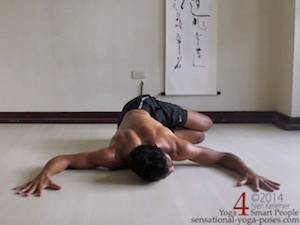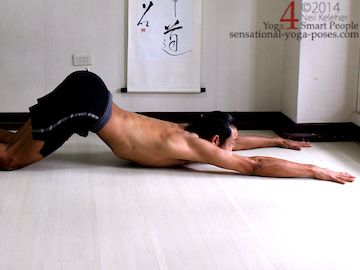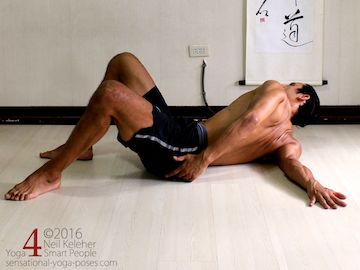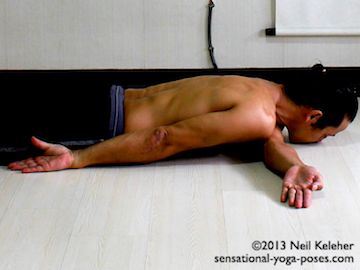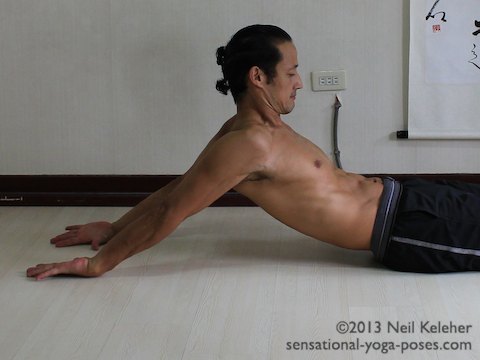Hatha Yoga Poses
Tips for sequencing yoga poses intelligently
One question or problem when doing yoga is how to sequence yoga poses.
When I first learned yoga, I learned a set series of poses called ashtanga yoga. After studying with Andrey Lappa I began to explore a less rigid (but still balanced) format for doing yoga.
He took a bit of the mystery out of how to sequence yoga poses creatively while still leaving the body in a balanced state.
One of the key ideas in this regard is counterposing, balancing aspects of one pose (or action) by doing another pose with the opposing or "balancing" aspect.
What follows is a general overview for how to sequence yoga poses including some possible benefits of different categories of poses and what to work on if you have problems like tight hamstrings.
One way to structure a yoga practice is to do standing yoga poses before seated yoga poses. (Kneeling and Cross Leg Poses even though grouped separately can also be considered as seated poses.)
While standing (you could be doing mountain pose), you can work on:
This can then be a preparation for arm supported yoga poses which can be used to strengthen arms and shoulders.
Strengthening and Stretching Your Hamstrings
If you have tight hamstrings it might be helpful to start with standing poses such as these hamstring stretching yoga poses. Standing hamstring stretches are generally easier than hamstring stretching yoga poses. When working on your hamstrings, whether to strengthen them, stretch them or both it can be helpful to understand how the hamstrings and glutes work together.
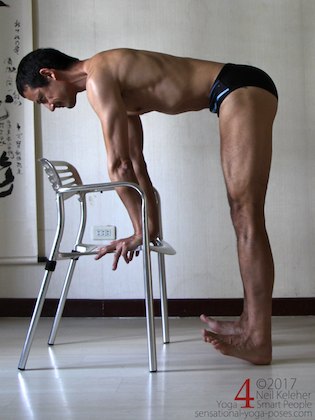
Standing Forward Bend
(If you can't touch the floor with your hands while doing a standing forward bend, you can always use a chair or yoga blocks! Likewise with half moon pose.)
Options for strengthening the hamstrings include poses like:
Note, while forward bends are generally considered as hamstring stretches, it is possible to do forward bends for the spine and hips without involving the hamstrings. Some forward bends for the spine (and hips) could be considered as poses for strengthening the abs
Stability and Balance While Upright and Upside Down
Standing poses are a great way for developing stability and also for improving balance, particularly when Balancing on One Foot. They can also be an easy and safe way to learn principles of balance (like feeling your center) that can then be applied to:
Standing poses are also very dependent on the feet and so you may find it helpful to learn some basic foot exercises that you can do while standing.
Warming Up Without Sun Salutations
In Ashtanga Yoga the series of ashtanga yoga poses started with sun salutations as a warmup. In a freestyle practice, you can warm up in other ways .
One option is to start on the floor with seated yoga poses like:
(Table top bends the hips backwards while in Boat pose the hips are bent forwards.)
Another way to warm up for yoga is bend the spine forwards and backwards while sitting with legs crossed.
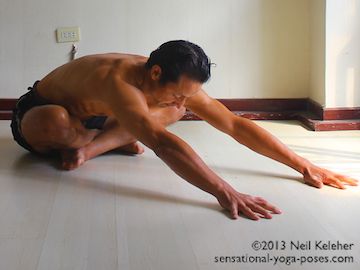
Cross Leg Forward Bend
With legs crossed, you can also twist your spine or bend forwards or do some shoulder work. From a cross legged position, it's easy to swing one leg back into some variation of pigeon pose.
Getting Comfortable Kneeling
If you have trouble kneeling, you could try warming up with kneeling or semi-kneeling yoga poses. You may find that stretching the toes and ankles makes it easier to get more comfortable while kneeling.
Kneeling type postures can also be used to practice balance.
Prepping the Shoulders and Wrists
From kneeling postures it is easy to move into Cat Pose and use it for working on the wrists, hands and shoulders. From cat pose you can lift the knees and do Dog Pose as a way to prepare for Plank Pose.
Other arm supported yoga poses include:
Note that most of these arm supported yoga poses are with the hands either in front of the body, or equivalently, over head (downward dog and dolphin).
For balance you should also include arm supported yoga poses like Side Plank, Table Top and/or Reverse Plank in some part of your routine.
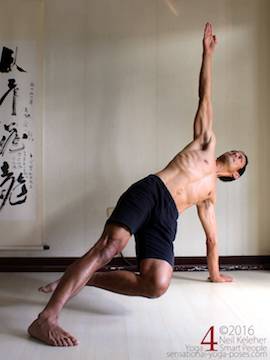
side plank
Active Rests
You could sequence poses to focus on one part of the body. Or you could sequence poses so that you rest a part that is tired by focusing on another part of the body.
It's difficult to learn when tired.
So if you've done a lot of bent knee standing poses like:
and you need a rest, then use a straight leg position like:
If you want to rest from standing poses in general, you could go to the floor for seated yoga poses.
You could also lunge or go on all fours for various hip stretches.
And if you wanted to you could stretch your quadriceps while kneeling
or you could stretch your quads while lying.
Backbending and Front Bending Your Spine
Two categories of poses that can be used to work on the spine (as well as the legs and arms) are:
Prone yoga poses like:
can be used for spinal back bends. You could think of them as a back bending yoga pose.
Back bending poses like locust, where the spinal erectors are working against gravity can also be thought of as back strengthening yoga poses.
Belly up yoga poses include:
Where bridge and wheel pose are both back bends for the spine, dead dog reach is a forward bend. And so the latter pose can be used as a counter pose for the former two as well as a strengthening yoga pose for the abs.
Spinal Twists and Side Bends
Side bends and twists for the spine have already been included in the context of standing and sitting poses, however you might choose to do a yoga practice based on side bending yoga poses or twisting yoga poses.
The Shoulders
You could also do a practice based on stretching the shoulders and arms. When using the arms, some basic arm positions to consider include arms up, arms forwards, arms to the side, arm across the chest and arms back. arm stretches for these positions include puppy dog, lapasana, half dragonfly and rack pose.
The Meridians
One tool that can be handy for guiding the way you stretch (and strengthen) your body is the Chinese Meridian system.
The meridians can be followed throughout the body in a complete circuit. Thus you can work the body fairly completely and smoothly just by stretching the meridians in turn.
Yoga poses are an opportunity for you to get to know your body. The shape of any pose is just the starting point for improving health, strength, balance, flexibility and coordination. It's a context for learning to sense and control your body, to experience it.
More
Sensational Yoga Ebooks and videos are designed to make learning your body an easier (and perhaps even enjoyable) experience.
Published: 2017 06 23
Updated: 2021 01 24

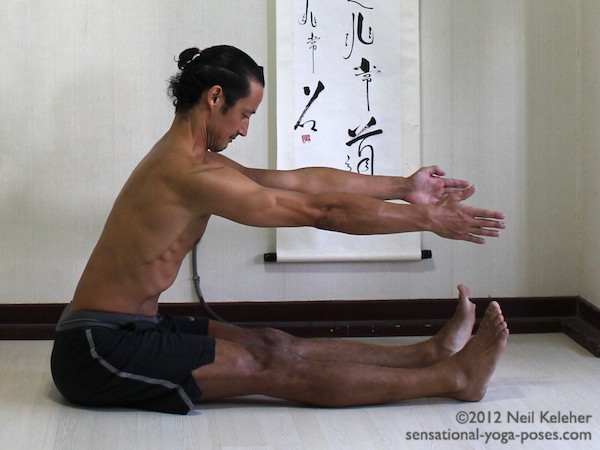
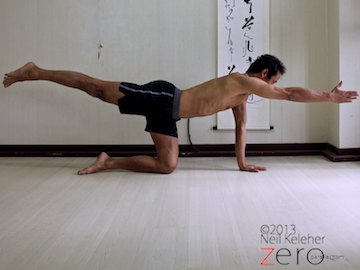
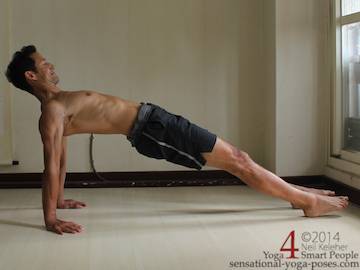
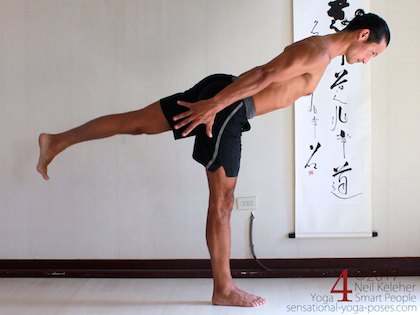
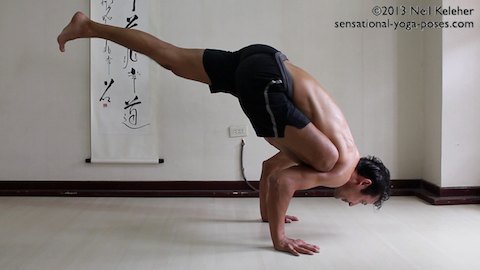
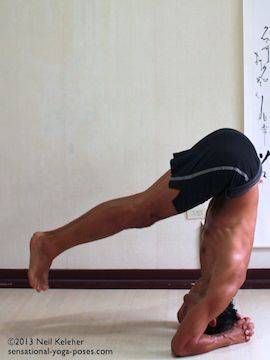

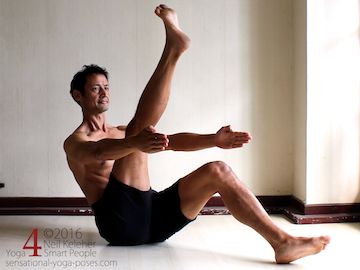
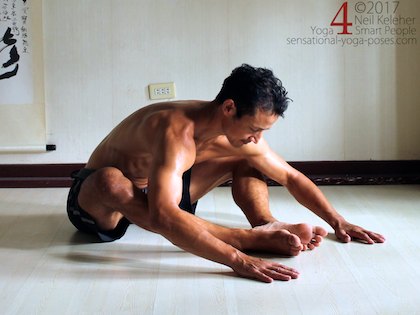
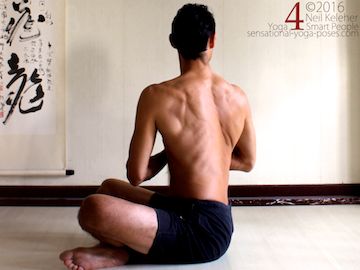

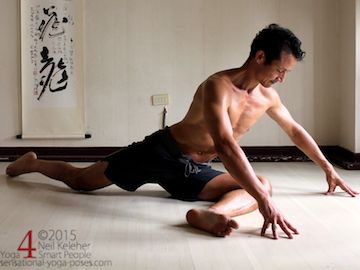
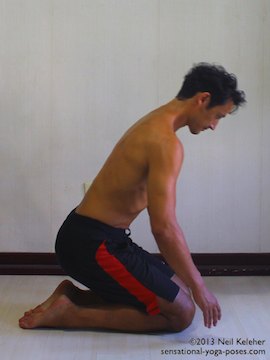
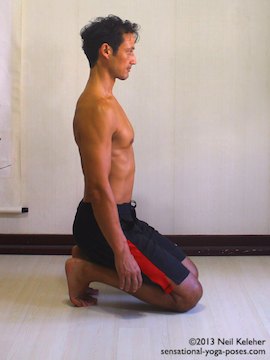
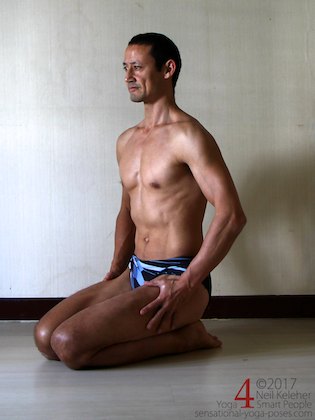
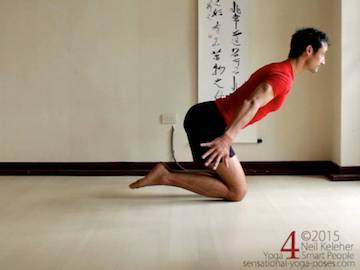
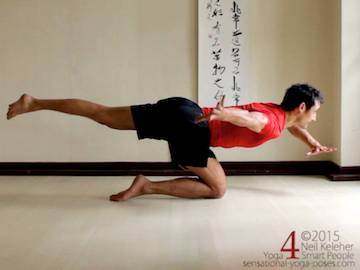
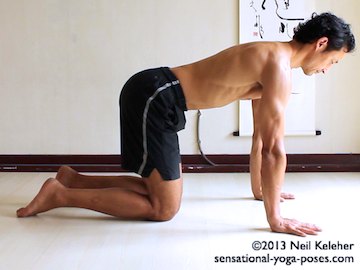
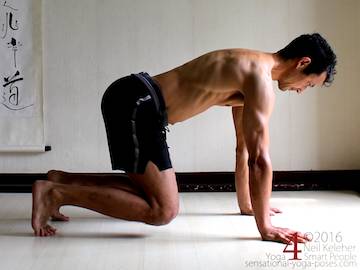
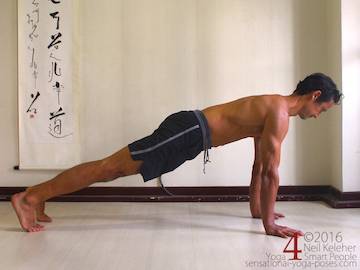

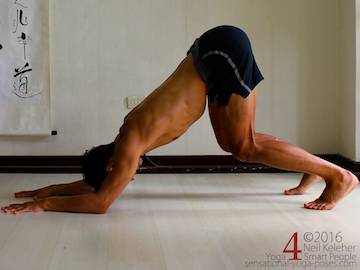
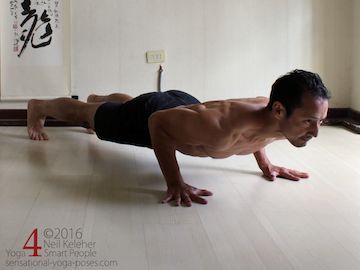
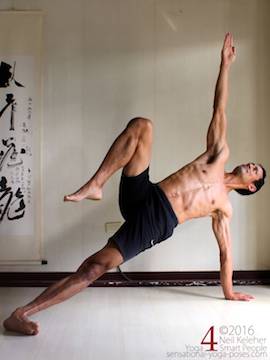
 side plank
side plank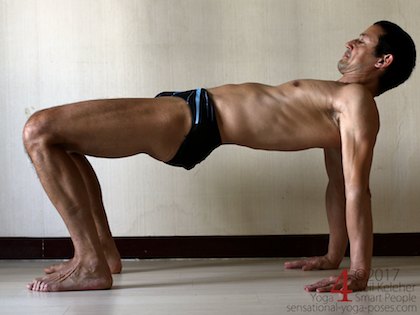
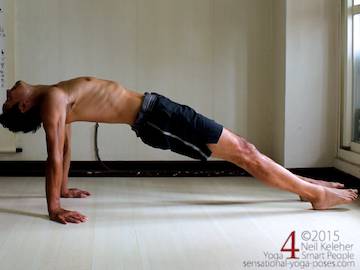

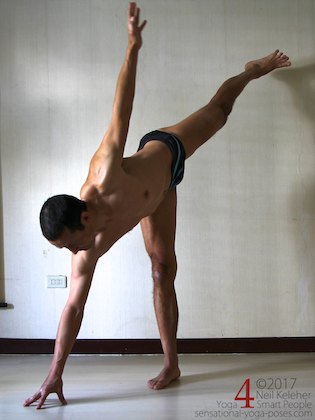
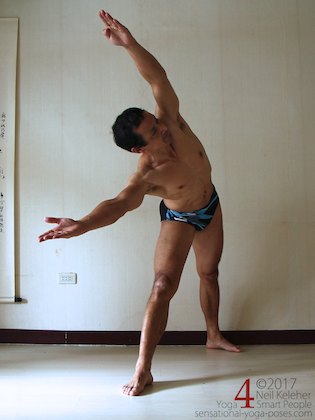
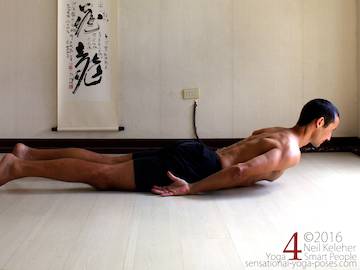
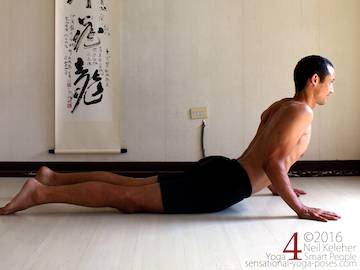
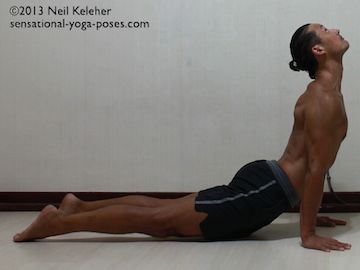
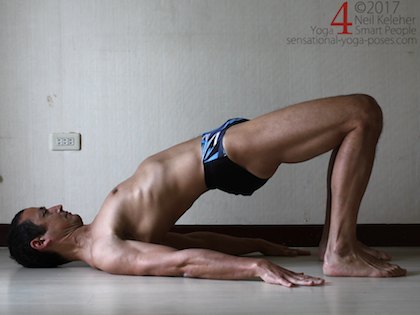
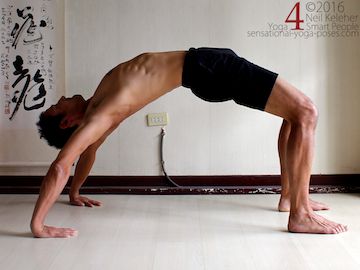
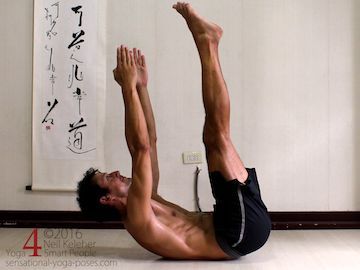
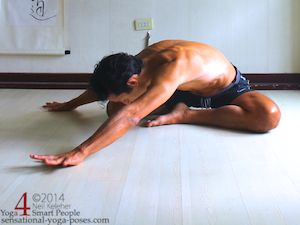 Seated Side Stretch
Seated Side Stretch